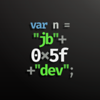Then on to replies:
quote: Original post by Machaira
1) What stats and how should be be used? I still think the basic stats are valid, but used slightly differently -
Actually I'd go borrow heavily from the World of Darkness rules and simplify the ultra-basic stats, leaving only three: Physical, Mental, and Social.
This has a couple of advantages. First of all, three streams of play are identified: you can emphasize the physical prowess of your character (the average fighter or soldier), the Mental ability (sorceror, mad scientist, tech type), or Social ability (Rockers in Cyberpunk, perhaps maybe bards a little bit in D&D?).
If you polarise the in-game mechanics on all of these three, then you'll allow multiple styles of play for the different archetypes.
The second benefit is that there are only three stats at top-level to worry about, and those are simple to understand in human terms. There's no huge explosion in the number of possibilities at that level, so the design of adventures/quests should also be reasonably easy, while keeping things balanced.
This system can (but should not necessarily be!) detailed by adding sub-stats to the main ones, as is done in the World of Darkness rules. The only constraint I'd put here is: the amount of detailing needs to be the same for each of the three categories, and each of the sub-stats must have the same weight towards the total (i.e. not one all-important substat and ten nearly insignificant specialised ones).
So, as a slightly-more detailed example:
Physical: Strength, Agility
Mental: Intelligence, Wit
Social: Charisma, Looks
I've tried to keep the divisions similar for each category - wit is "speed of thought", where agility is plain speed. Looks also make you have success faster in Social engagements, but in the end it comes down to your actual Charisma if you get the princess or not (unless she's really shallow
Also note that I'm using percentile scores here. I like percentile scores because they are easy to read, but for unlimited-growth they aren't the best choice. What numbering system would you guys use?
quote: Original post by Machaira
Something like pain threshold or tolerance could be used in place of hit points, possibly along with Constitution. This could be something that could be improved with training.
I like the idea. I would split it up into the same three sections that I did above. You have physical tolerance, mental tolerance and social tolerance.
Physical tolerance is like hitpoints, pain threshold and endurance rolled into one. It's how long you can run, how hard someone can hit you before you say "ouch".
Mental tolerance is concentration, strength of will, that kind of thing. How long you can study without taking a break, how long you can stare someone in the eye without blinking.
Social tolerance is something I haven't seen in ANY game anywhere, most likely because PnP games tend to leave the social stuff to the players without too many rolls. Not so for PC games, we MUST roll this stuff into stats. So, what is social tolerance? It applies to things like embarrasment (how much rejection can you take before getting annoyed), and being open to people you perceive to not be in the same social class (up or down! Think of the brawny barbarian that can't stand the fragile artsy-fartsy upper class and their colourful clothes and jewelry).
I feel this would add useful complexity, but also consistency, because it grabs back to how I divided things above. The actual values of these stats could be directly related to the main score above, perhaps even BEING that value. That would, to me, be a simplification that isn't an unnecessary abstraction, but feel free to disagree
quote: Original post by Machaira
2) I would have to say a skills based system would be a good idea for combat and non-combat things. Exactly how it's implemented is open for discussion.
I'm not 100% sure on this yet either. I want skills to apply to the main ability scores outlined above, but I can't decide fully if I only want to apply them to the "aggregate" main, or the "specialised" scores. Really, it would have to be the specialised scores, otherwise there would be no point to them! Perhaps, giving the player the choice which of the specialised scores to use to perform the skill-based action. Then you automatically achieve combat using strength (full-plate-armour tank-type fighter), or agility(swashbuckler), without needing explicit secondary rules for them, and that seems like a good thing. So basically, you'd have a "physical combat" skill, that you can combine with either of your physical sub-stats to get something of an "attack roll". Very generalised, in such a way that physical combat is now no different than any other kind of skill test. I find this good, but again, feel free to disagree!
quote: Original post by Machaira
3) Armor would be used to decrease damage taken, not avoid it. Location based, of course and with a stat that measured how good it is against certain weapon types (chainmail sucks against stabbing weapons like daggers).
I don't think I'm really at the necessary level of detail with my newly-thought-up system that I can build up to a reasonable, consistent way of describing this situation. During the course of this thread I've realised that this is a VERY specialised situation, and part of the problem(the reason this discussion has arisen in the first place) is that D&D has very specialised rules for combat as opposed to everything else, suggesting that making combat even more detailed is probably a good thing. I'm thinking that the way I'm currently going about designing my system, this kind of detail might end up being overkill (which would be a shame, 'cause I find it a very interesting situation).
quote: Original post by Machaira
4) Combat could be real time turn based similar to how NWN implemented the D&D rules, or it could be open and based on things like weapon speed and quickness. Personally I would prefer the latter.
I'd prefer the latter too, and not just for combat. Writing all of this, I've realised that combat should be just like everything else, or rather, everything else should be just like combat! Combat is what has been done "most right" in most CRPGs. I'd like it to be near-real-time, with action always happening at quite a decent pace on your screen. Your character's ability would influence what exactly happened, and how often you could influence it. Now, before you flame me, "often" would be how many times per second
Machaira, I hope you didn't read all that thinking "he's just taking down whatever I put up". I've tried to mix in my own ideas, but I realise I have very strong opinions on this so I apologise in advance if it seems like I barely read your post. So, any comments?
[edited by - MadKeithV on July 29, 2002 3:52:22 AM]








